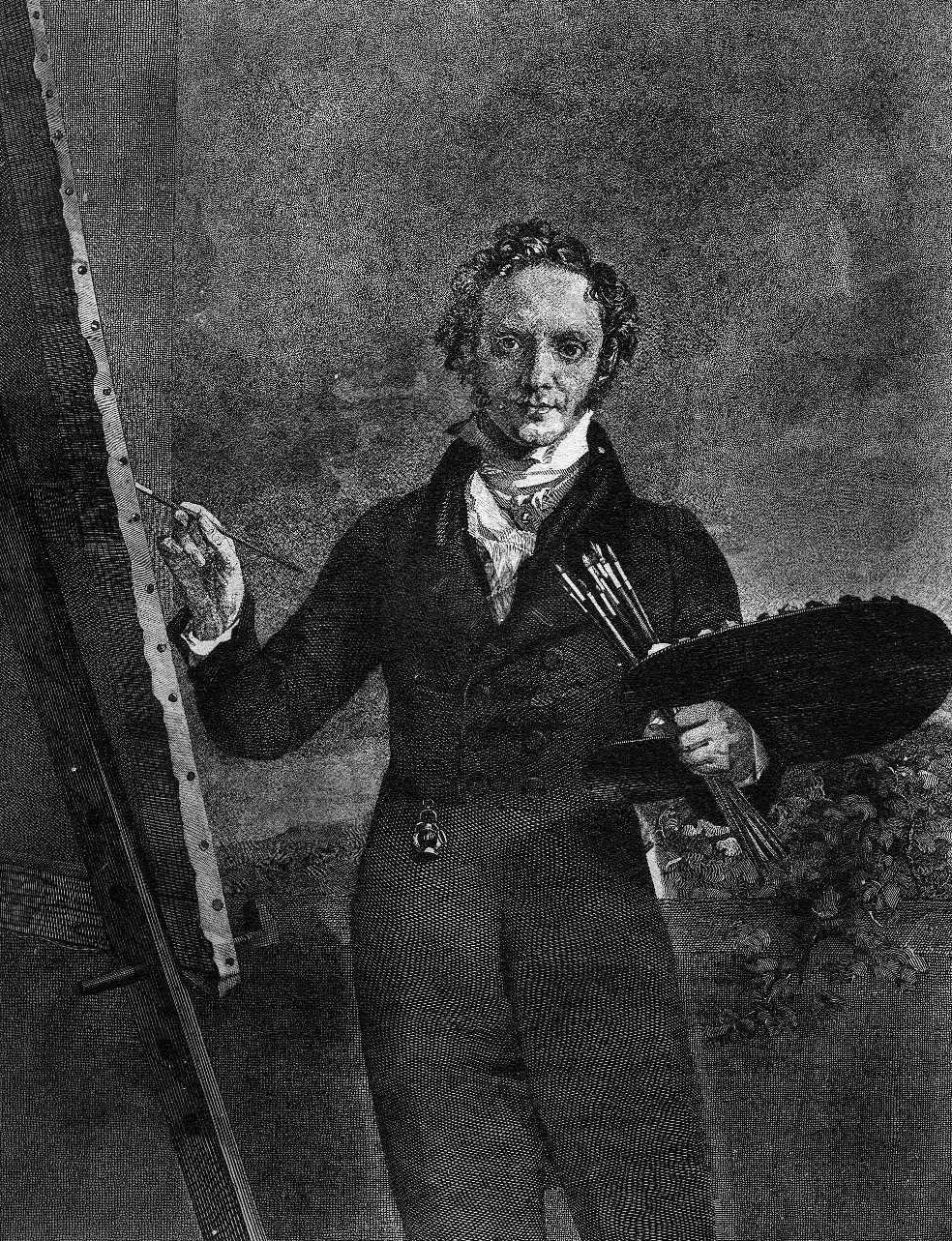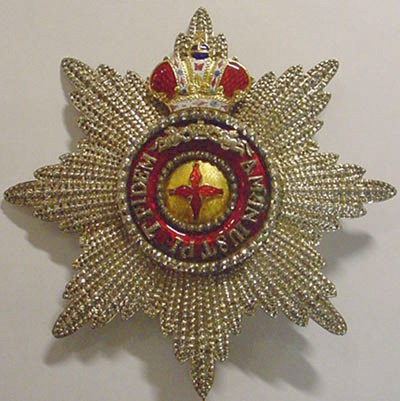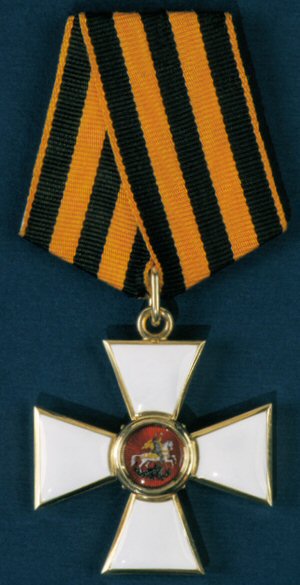|
Adam Georg Von Agthe
Adam Georg von Agthe (12 August 1777 – 26 August 1826) was a major general in the Imperial Russian Army during the Napoleonic Wars. He was also known by his Russian name Egor Andreevich Akhte (russian: Егор Андреевич Ахте). Biography He was born into a Baltic-German noble family. He was promoted to lieutenant in 1796. He fought at the battle of Austerlitz in 1805, receiving a medal for distinction, and fought in the Russo-Turkish War between 1806 and 1811. He was awarded the Order of St George 4th class on 10 March 1812 for the capture of Batina and also fought at the battle of Borodino. He was promoted to major general after the battle of Leipzig in 1813, but was invalided out of the army on 15 April 1816 due to several injuries. See also *List of Russian commanders in the Patriotic War of 1812 This is a list of commanders of the Russian Army in 1812 before the Patriotic War of 1812. __NOTOC__ A B C D E F G H I J K L M N O P ... [...More Info...] [...Related Items...] OR: [Wikipedia] [Google] [Baidu] |
George Dawe
George Dawe (6 February 1781 – 15 October 1829) was an English portraitist who painted 329 portraits of Russian generals active during Napoleon's invasion of Russia for the Military Gallery of the Winter Palace. He relocated to Saint Petersburg in 1819, where he won acclaim for his work from the artistic establishment and complimentary verses by Pushkin. He was the son of Philip Dawe, a successful mezzotint engraver who also produced political cartoons relating to the events of the Boston Tea Party. One of his brothers was Henry Edward Dawe, also a portraitist. He died on 15 October 1829 in Kentish Town, United Kingdom. Life and career Early life and studies George Dawe was born on 6 February 1781 to Philip Dawe and Jane in Brewer Street, in the parish of St James's in Westminster. Philip was an artist and engraver in mezzotint who had worked with Hogarth and Joseph Mallord William Turner and who also produced satirical political cartoons about life in America which are ... [...More Info...] [...Related Items...] OR: [Wikipedia] [Google] [Baidu] |
Battle Of Bautzen (1813)
In the Battle of Bautzen (20–21 May 1813), a combined Prusso–Russian army, that was massively outnumbered, was pushed back by Napoleon but escaped destruction, with some sources claiming that Marshal Michel Ney failed to block their retreat. The Prussians under General Gebhard Leberecht von Blücher and Russians under General Peter Wittgenstein, retreating after their defeat at Lützen were attacked by French forces under Napoleon. Prelude The Prusso-Russian army was in a full retreat following their defeat at the Battle of Lützen. Finally, generals Wittgenstein and Blücher were ordered to stop at Bautzen by Tsar Alexander I and King Frederick William III. The Russo-Prussian army was nearly 96,000 strong, but Napoleon had 144,000. Wittgenstein formed two strong defensive lines east of the River Spree, with the first holding strongpoints in villages and along hills and the second holding the bridges behind a river bend. Their left flank was anchored by the town of Baut ... [...More Info...] [...Related Items...] OR: [Wikipedia] [Google] [Baidu] |
Battle Of Austerlitz
The Battle of Austerlitz (2 December 1805/11 Frimaire An XIV FRC), also known as the Battle of the Three Emperors, was one of the most important and decisive engagements of the Napoleonic Wars. The battle occurred near the town of Austerlitz in the Austrian Empire (modern-day Slavkov u Brna in the Czech Republic). The decisive victory of Napoleon's Grande Armée at Austerlitz brought the War of the Third Coalition to a rapid end, with the Treaty of Pressburg signed by the Austrians later in the month. The battle is often cited as a tactical masterpiece, in the same league as other historic engagements like Cannae or Gaugamela.Farwell p. 64. "Austerlitz is generally regarded as one of Napoleon's tactical masterpieces and has been ranked as the equal of Arbela, Cannae, and Leuthen."Dupuy p. 102 After eliminating an Austrian army during the Ulm Campaign, French forces seized Vienna in November 1805. The Austrians avoided further conflict until the arrival of the Russians bolster ... [...More Info...] [...Related Items...] OR: [Wikipedia] [Google] [Baidu] |
Baltic Germans
Baltic Germans (german: Deutsch-Balten or , later ) were ethnic German inhabitants of the eastern shores of the Baltic Sea, in what today are Estonia and Latvia. Since their coerced resettlement in 1939, Baltic Germans have markedly declined as a geographically determined ethnic group. However, it is estimated that several thousand people with some form of (Baltic) German identity still reside in Latvia and Estonia. Since the Middle Ages, native German-speakers formed the majority of merchants and clergy, and the large majority of the local landowning nobility who effectively constituted a ruling class over indigenous Latvian and Estonian non-nobles. By the time a distinct Baltic German ethnic identity began emerging in the 19th century, the majority of self-identifying Baltic Germans were non-nobles belonging mostly to the urban and professional middle class. In the 12th and 13th centuries, Catholic German traders and crusaders (''see '') began settling in the eas ... [...More Info...] [...Related Items...] OR: [Wikipedia] [Google] [Baidu] |
Napoleonic Wars
The Napoleonic Wars (1803–1815) were a series of major global conflicts pitting the French Empire and its allies, led by Napoleon I, against a fluctuating array of European states formed into various coalitions. It produced a period of French domination over most of continental Europe. The wars stemmed from the unresolved disputes associated with the French Revolution and the French Revolutionary Wars consisting of the War of the First Coalition (1792–1797) and the War of the Second Coalition (1798–1802). The Napoleonic Wars are often described as five conflicts, each termed after the coalition that fought Napoleon: the Third Coalition (1803–1806), the Fourth (1806–1807), the Fifth (1809), the Sixth (1813–1814), and the Seventh (1815) plus the Peninsular War (1807–1814) and the French invasion of Russia (1812). Napoleon, upon ascending to First Consul of France in 1799, had inherited a republic in chaos; he subsequently created a state with stable financ ... [...More Info...] [...Related Items...] OR: [Wikipedia] [Google] [Baidu] |
Imperial Russian Army
The Imperial Russian Army (russian: Ру́сская импера́торская а́рмия, tr. ) was the armed land force of the Russian Empire, active from around 1721 to the Russian Revolution of 1917. In the early 1850s, the Russian Army consisted of more than 900,000 regular soldiers and nearly 250,000 irregulars (mostly Cossacks). Precursors: Regiments of the New Order Russian tsars before Peter the Great maintained professional hereditary musketeer corps known as '' streltsy''. These were originally raised by Ivan the Terrible; originally an effective force, they had become highly unreliable and undisciplined. In times of war the armed forces were augmented by peasants. The regiments of the new order, or regiments of the foreign order (''Полки нового строя'' or ''Полки иноземного строя'', ''Polki novovo (inozemnovo) stroya''), was the Russian term that was used to describe military units that were formed in the Tsardom of Russi ... [...More Info...] [...Related Items...] OR: [Wikipedia] [Google] [Baidu] |
Order Of The Red Eagle
The Order of the Red Eagle (german: Roter Adlerorden) was an order of chivalry of the Kingdom of Prussia. It was awarded to both military personnel and civilians, to recognize valor in combat, excellence in military leadership, long and faithful service to the kingdom, or other achievements. As with most German (and most other European) orders, the Order of the Red Eagle could only be awarded to commissioned officers or civilians of approximately equivalent status. However, there was a medal of the order, which could be awarded to non-commissioned officers and enlisted men, lower ranking civil servants and other civilians. History The predecessor to the Order of the Red Eagle was founded on 17 November 1705, by the Margrave Georg Wilhelm of Brandenburg-Bayreuth as the '' Ordre de la Sincerité''. This soon fell into disuse but was revived in 1712 in Brandenburg-Bayreuth and again in 1734 in Brandenburg-Ansbach, where it first received the name of "Order of the Brandenburg Red Eagle ... [...More Info...] [...Related Items...] OR: [Wikipedia] [Google] [Baidu] |
Pour Le Mérite
The ' (; , ) is an order of merit (german: Verdienstorden) established in 1740 by Frederick the Great, King Frederick II of Prussia. The was awarded as both a military and civil honour and ranked, along with the Order of the Black Eagle, the Order of the Red Eagle and the House Order of Hohenzollern, among the highest orders of merit in the Kingdom of Prussia. The order of merit was the highest royal Prussian order of bravery for officers of all ranks. After 1871, when the various German monarchy, kingdoms, grand duchy, grand duchies, duchy, duchies, principality, principalities and Hanseatic League, Hanseatic city states had come together under Prussian leadership to form the federally structured German Empire, the Prussian honours gradually assumed, at least in public perception, the status of orders, decorations, and medals of Imperial Germany, honours of Imperial Germany, even though many honours of the various German states continued to be awarded. The ' was an honour confe ... [...More Info...] [...Related Items...] OR: [Wikipedia] [Google] [Baidu] |
Order Of Saint Vladimir
The Imperial Order of Saint Prince Vladimir (russian: орден Святого Владимира) was an Imperial Russian order established on by Empress Catherine II in memory of the deeds of Saint Vladimir, the Grand Prince and the Baptizer of the Kievan Rus'. Grades The order had four degrees and was awarded for continuous civil and military service. People who had been awarded with the St. Vladimir Order for military merits bore it with a special fold on the ribbon – "with a bow". There was a certain hierarchy of Russian Orders. According to this, the First Class Order of Saint Vladimir was the second one—the first was the Saint George Order—by its significance. According to Russian laws on nobility, people who were awarded the Order of Saint Vladimir had the rights of hereditary nobility until the Emperor's decree of 1900 was issued. After this, only three first classes of the order gave such a right, the last one granting only personal nobility. Today, G ... [...More Info...] [...Related Items...] OR: [Wikipedia] [Google] [Baidu] |
Order Of Saint Anna
The Imperial Order of Saint Anna (russian: Орден Святой Анны; also "Order of Saint Anne" or "Order of Saint Ann") was a Holstein ducal and then Russian imperial order of chivalry. It was established by Karl Friedrich, Duke of Holstein-Gottorp, on 14 February 1735, in honour of his wife Anna Petrovna, daughter of Peter the Great of Russia. Originally, the Order of Saint Anna was a dynastic order of knighthood; but between 1797 and 1917 it had dual status as a dynastic order and as a state order. The Order of St. Anna continued to be awarded after the revolution by Grand Duke Kirill Vladimirovich, Grand Duke Vladimir Kirillovich, and Grand Duchess Maria Vladimirovna. Today, the Russian Imperial Order of St. Anna, awarded by Grand Duchess Maria Vladimirovna is recognized as an order of chivalry by the privately operated ICOC as a continuation of the pre-Revolutionary order, and has been approved for wear with military uniform by the Russian Federation, but not by s ... [...More Info...] [...Related Items...] OR: [Wikipedia] [Google] [Baidu] |
Order Of Saint George
The Order of Saint George (russian: Орден Святого Георгия, Orden Svyatogo Georgiya) is the highest military decoration of the Russian Federation. Originally established on 26 November 1769 Julian (7 December 1769 Gregorian) as the highest military decoration of the Russian Empire for commissioned officers and generals by Empress Catherine the Great.Hurley, C. ''Russian Orders, Decorations, and Medals Under the Monarchy''. Harrison & Sons., Ltd., London. 1935. After the October Revolution in 1917, it was awarded by the White movement under Alexander Kolchak until their collapse in 1921. The order was revived in the Russian Federation on 8 August 2000 by Decree №1463 of the President of Russia. The current award criteria were amended on 7 September 2010 by Presidential Decree 1099. Statute of the Order of St. George The current Order of Saint George is awarded to highest and senior military officers for the conduct of military operations to protect the M ... [...More Info...] [...Related Items...] OR: [Wikipedia] [Google] [Baidu] |
Battle Of Paris (1814)
The Battle of Paris was fought on 30–31 March 1814 between the Sixth Coalition, consisting of Russia, Austria, and Prussia, against the French Empire. After a day of fighting in the suburbs of Paris, the French surrendered on March 31, ending the War of the Sixth Coalition and forcing Emperor Napoleon to abdicate and go into exile. Background Napoleon was retreating from his failed invasion of Russia in 1812. With the Russian armies following up victory, the Sixth Coalition was formed with Russia, Austria, Prussia, Portugal, Great Britain, Sweden, Spain and other nations hostile to the French Empire. Even though the French were victorious in the initial battles during their campaign in Germany, the Coalition armies eventually joined together and defeated them at the Battle of Leipzig in the autumn of 1813. After the battle, the Pro-French German Confederation of the Rhine collapsed, thereby loosening Napoleon's hold on Germany east of the Rhine. The Coalition forces i ... [...More Info...] [...Related Items...] OR: [Wikipedia] [Google] [Baidu] |






.jpg)